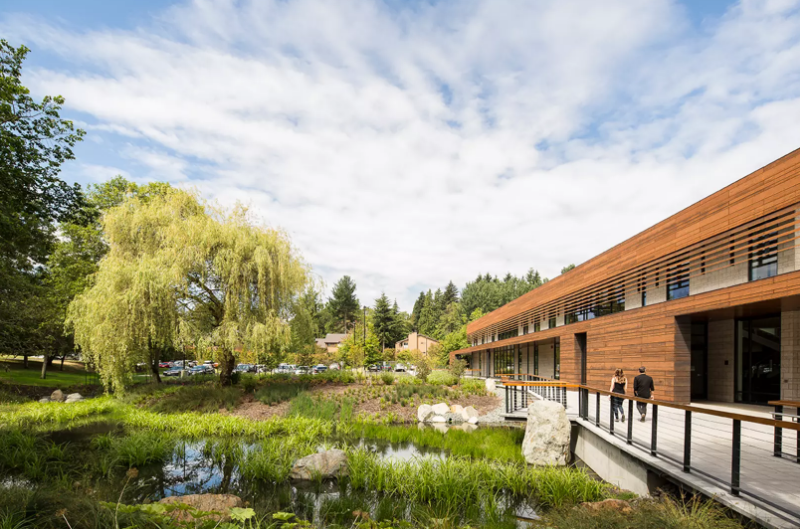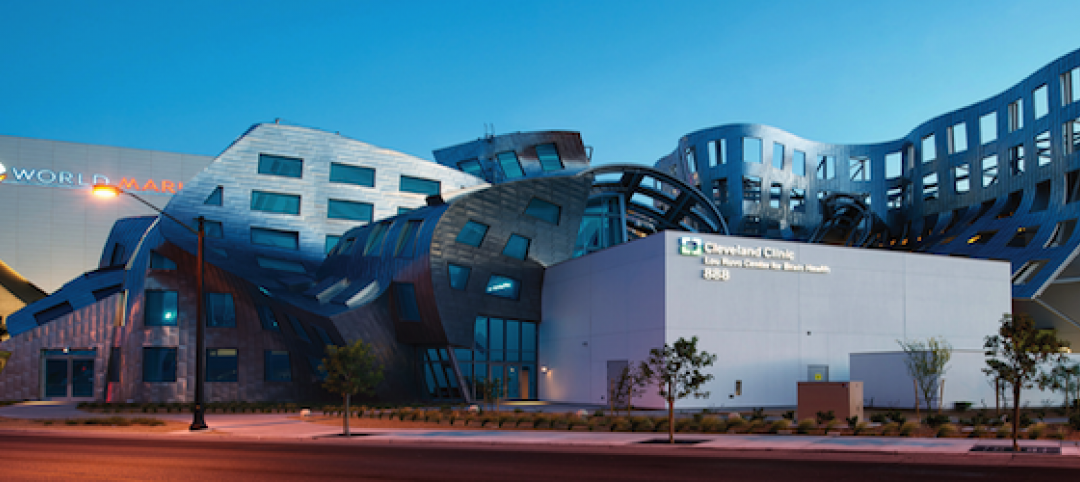The American Institute of Architects (AIA) Academy of Architecture for Health (AAH) has selected the recipients of the AIA Healthcare Design Awards program. The award program showcases the best healthcare building design and healthcare design-oriented research. Projects exhibit conceptual strengths that solve aesthetic, civic, urban, and social concerns as well as the requisite functional and sustainability concerns of a hospital.
Recipients were selected in four different categories:
Category A - Built: Less than $25 million (construction cost)
Category B - Built: More than $25 million (construction cost)
Category C - Renovations/Remodeled: Primarily built within existing hospital or clinical space
Category D - Unbuilt: must be commissioned for compensation by a client with the authority and intention to build
Category A
Harvey Pediatric Clinic; Rogers, Arkansas
Marlon Blackwell Architects
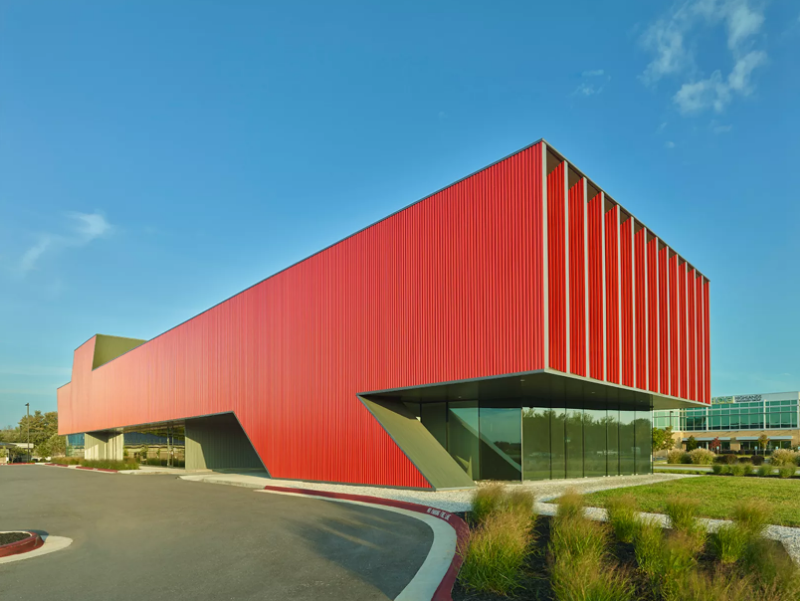 Photo: Timothy Hursley.
Photo: Timothy Hursley.
Situated in a fast-developing area, the Harvey Pediatric Clinic is an abstract figure set in contrast to the excess of materials, weak forms, and beige tones that make up the everyday suburban landscape that surrounds the building. The cayenne-color metal panel wraps the entire south side of the building, providing a strong identity for the practice. Patients enter the building, pass through and ascend a stair that is washed in blue light from the skylight above. Sixteen exam rooms are organized along a simple, clear circulation path defined by several skylights that bring natural light deep into the building.
Neighborcare Health, Meridian Center for Health; Seattle
NBBJ
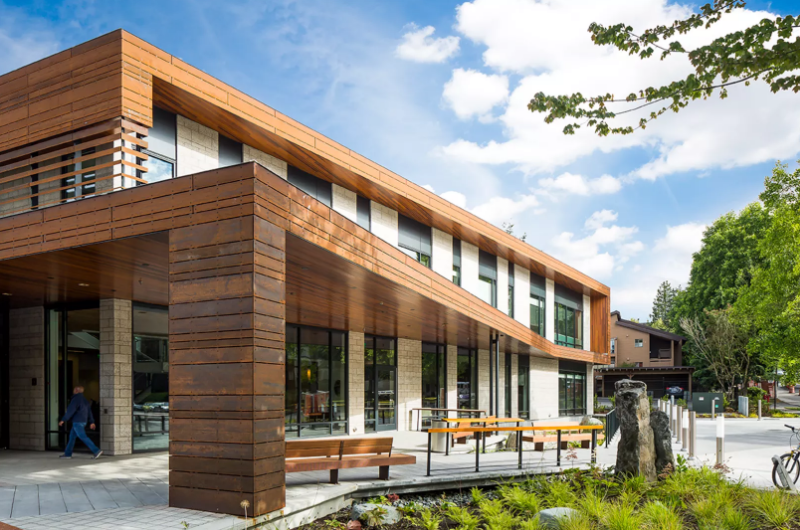 Photo: NBBJ/Sean Airhart.
Photo: NBBJ/Sean Airhart.
Partially funded by a federal grant, the Meridian Center for Health is a first of its kind: an integrated, one-stop model for health treatment and prevention for underserved Seattle-area residents. Uniting three health organizations under the same roof, the center provides low- to no-cost medical, dental, and mental health services for adults and children. Design elements include an open floor plan, a dramatic feature stair in the lobby, and a range of team and community spaces that remain available for neighborhood organizations after hours. The Center is tracking to receive LEED Gold certification.
Category B
Mercy Virtual Care Center; Chesterfield, Missouri
FORUM STUDIO
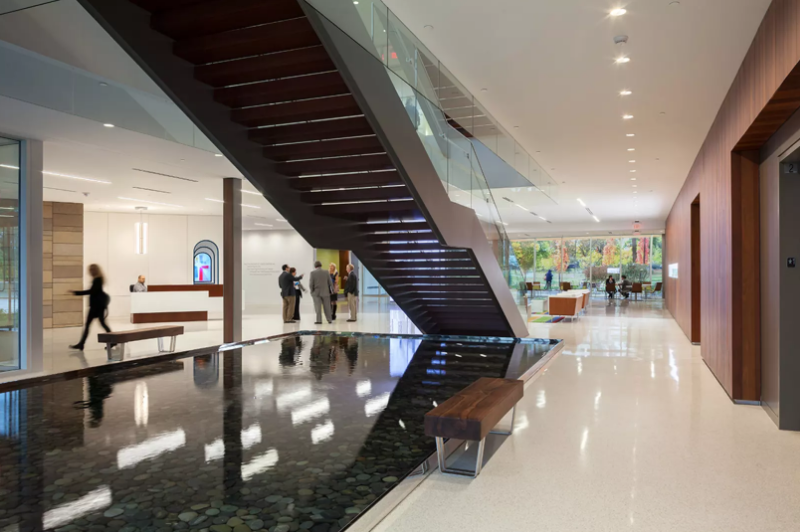 Photo: Sam Fentress.
Photo: Sam Fentress.
The Virtual Care Center exemplifies this Catholic health system’s bold commitment to the future of healthcare. This first-of-its-kind facility advances Mercy’s mission of transformative care while dramatically improving outcomes through improved patient management. The design blends the built with nature through an authentic use of materials and space. A palette of stone, glass, precast and wood coupled with flexible floor plates create an environment that fosters innovation, collaboration and patient centric care. The Virtual Care Center, the genesis of a national consortium of virtual providers, pioneers a new model of care.
UC San Diego Jacobs Medical Center; La Jolla, California
Cannon Design
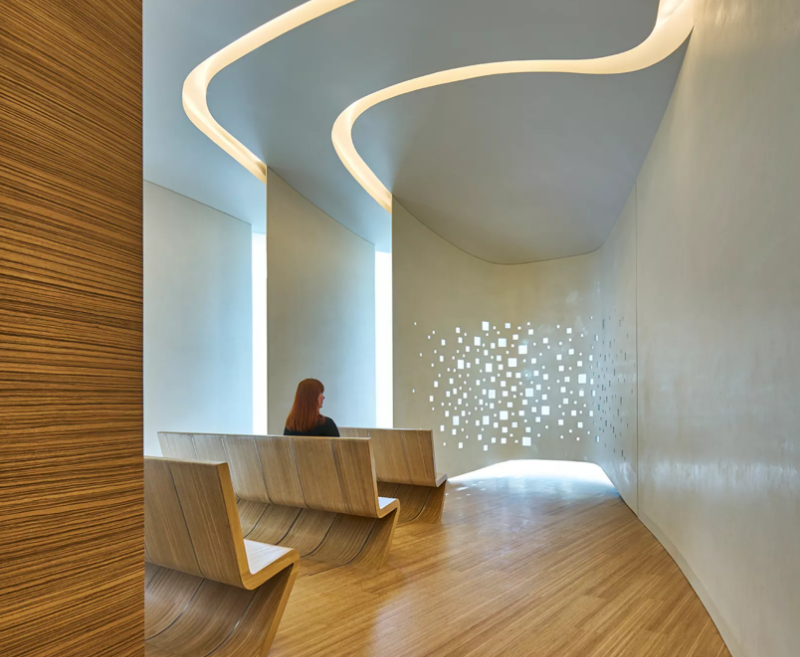 Photo: Christopher Barrett.
Photo: Christopher Barrett.
Reflective of UC San Diego’s vision toward the future intersections between technology and medicine, Jacobs Medical Center is designed as three hospitals in one with focus on women’s and children’s, cancer and specialty surgery. The tower is the cornerstone of a new campus identity focused on the future of health, pairing cutting-edge, modern medicine with best-in-class patient experience.
Category C
Advocate Lutheran General Hospital Cardiac Catheterization Suite; Park Ridge, Illinois
Philips Design and Anderson Mikos Architects
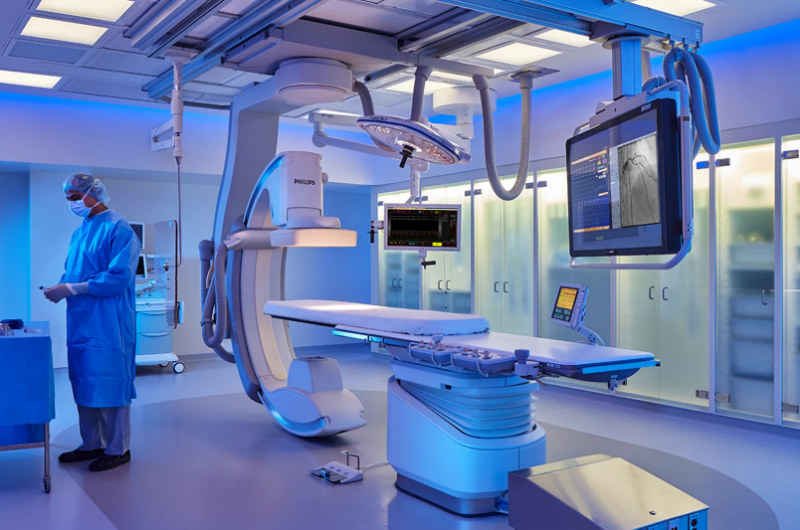 Photo: Craig Dugan Photography
Photo: Craig Dugan Photography
The design team worked closely with key stakeholders to achieve Advocate Health Care Heart Institute’s goal of improved customer experience, safety, and outcomes. The new cardiac catheterization suite improves the way people receive care through the complete transformation of patient, family and staff experiences. The resulting optimized flow and journey includes a transradial recovery lounge, labs that inspire confidence while improving safety, and a first-of-its-kind prep/recovery bay solution that enables a less stressful recuperation personalized for each patient. The Advocate Experience has been redefined through the service and spatial design transformation for this Suite.
Bayshore Dental; Whitefish Bay, Wisconsin
Johnsen Schmaling Architects
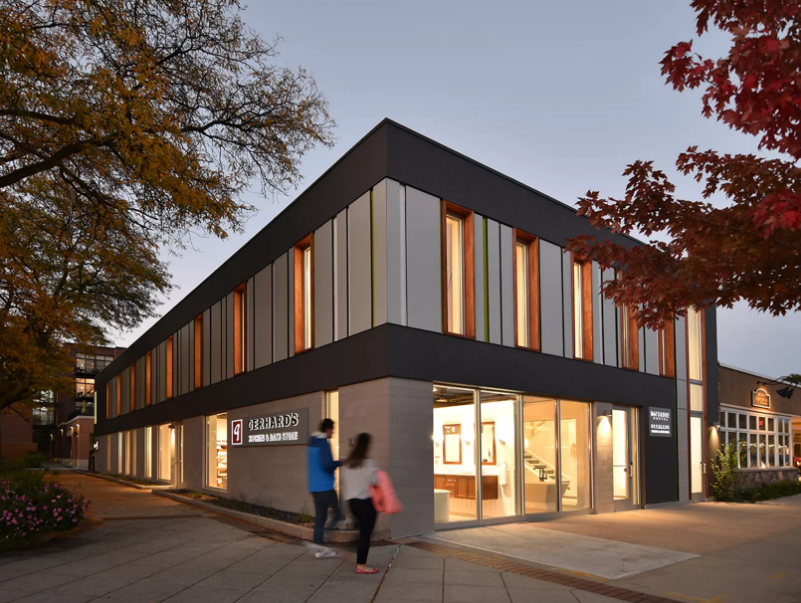 Photo: John J. Macaulay.
Photo: John J. Macaulay.
This project is the ambitious reinvention of an abandoned building and its transformation into a state-of-the-art clinic for a young dentist and her small staff. The project’s rigorous architecture and meticulous details echo the ethos of the flawless efficiency, uncompromising precision and exacting purity at the center of the innovative dentistry performed here. Procedural flow strategies informed the clinic’s overall layout. A continuous ceiling plane leads patients from the light-filled reception to the individual operatories, each marked by green vertical panels and light strips that animate the clinic’s central corridor. White oak cabinetry and green accents complement the intentionally restrained interior palette, all contributing to a deliberately serene ambience intended to appease a sometimes-apprehensive clientele.
Category D
Ambulatory Surgical Facility; Kyabirwa, Uganda
Kliment Halsband Architects
 Rendering: Kliment Halsband Architects.
Rendering: Kliment Halsband Architects.
This independent, off-the-grid ambulatory surgical facility is a replicable prototype for the five billion people in the world who lack access to safe or affordable surgery. The building is composed of three functional elements: a reception pavilion with offices grouped around a family waiting area courtyard, an intermediate pavilion for pre-op and post-op activities, and a sterile pavilion with two operating rooms and related support spaces. These elements are sheltered under a solar panel shade structure, inspired by the banana plants on the site.
Related Stories
| Jan 21, 2011
Research center built for interdisciplinary cooperation
The Jan and Dan Duncan Neurological Research Institute at Texas Children’s Hospital, in Houston, the first basic research institute for childhood neurological diseases, is a 13-story twisting tower in the center of the hospital campus.
| Jan 19, 2011
Biomedical research center in Texas to foster scientific collaboration
The new Health and Biomedical Sciences Center at the University of Houston will facilitate interaction between scientists in a 167,000-sf, six-story research facility. The center will bring together researchers from many of the school’s departments to collaborate on interdisciplinary projects. The facility also will feature an ambulatory surgery center for the College of Optometry, the first of its kind for an optometry school. Boston-based firms Shepley Bulfinch and Bailey Architects designed the project.
| Jan 19, 2011
New Fort Hood hospital will replace aging medical center
The Army Corps of Engineers selected London-based Balfour Beatty and St. Louis-based McCarthy to provide design-build services for the Fort Hood Replacement Hospital in Texas, a $503 million, 944,000-sf complex partially funded by the American Recovery and Reinvestment Act. The firm plans to use BIM for the project, which will include outpatient clinics, an ambulance garage, a central utility plant, and three parking structures. Texas firms HKS Architects and Wingler & Sharp will participate as design partners. The project seeks LEED Gold.
| Jan 10, 2011
Michael J. Alter, president of The Alter Group: ‘There’s a significant pent-up demand for projects’
Michael J. Alter, president of The Alter Group, a national corporate real estate development firm headquartered in Skokie, Ill., on the growth of urban centers, project financing, and what clients are saying about sustainability.
| Dec 17, 2010
ARRA-funded Navy hospital aims for LEED Gold
The team of Clark/McCarthy, HKS Architects, and Wingler & Sharp are collaborating on the design of a new naval hospital at Camp Pendleton in Southern California. The $451 million project is the largest so far awarded by the U.S. Navy under the American Recovery and Reinvestment Act. The 500,000-sf, 67-bed hospital, to be located on a 70-acre site, will include facilities for emergency and primary care, specialty care clinics, surgery, and intensive care. The Building Team is targeting LEED Gold.
| Dec 17, 2010
Arizona outpatient cancer center to light a ‘lantern of hope’
Construction of the Banner MD Anderson Cancer Center in Gilbert, Ariz., is under way. Located on the Banner Gateway Medical Center campus near Phoenix, the three-story, 131,000-sf outpatient facility will house radiation oncology, outpatient imaging, multi-specialty clinics, infusion therapy, and various support services. Cannon Design incorporated a signature architectural feature called the “lantern of hope” for the $90 million facility.
| Oct 18, 2010
World’s first zero-carbon city on track in Abu Dhabi
Masdar City, the world’s only zero-carbon city, is on track to be built in Abu Dhabi, with completion expected as early as 2020. Foster + Partners developed the $22 billion city’s master plan, with Adrian Smith + Gordon Gill Architecture, Aedas, and Lava Architects designing buildings for the project’s first phase, which is on track to be ready for occupancy by 2015.
| Oct 13, 2010
Prefab Trailblazer
The $137 million, 12-story, 500,000-sf Miami Valley Hospital cardiac center, Dayton, Ohio, is the first major hospital project in the U.S. to have made extensive use of prefabricated components in its design and construction.
| Oct 13, 2010
Hospital tower gets modern makeover
The Wellmont Holston Valley Medical Center in Kingsport, Tenn., expanded its D unit, a project that includes a 243,443-sf addition with a 12-room operating suite, a 36-bed intensive care unit, and an enlarged emergency department.
| Oct 13, 2010
Hospital and clinic join for better patient care
Designed by HGA Architects and Engineers, the two-story Owatonna (Minn.) Hospital, owned by Allina Hospitals and Clinics, connects to a newly expanded clinic owned by Mayo Health System to create a single facility for inpatient and outpatient care.


